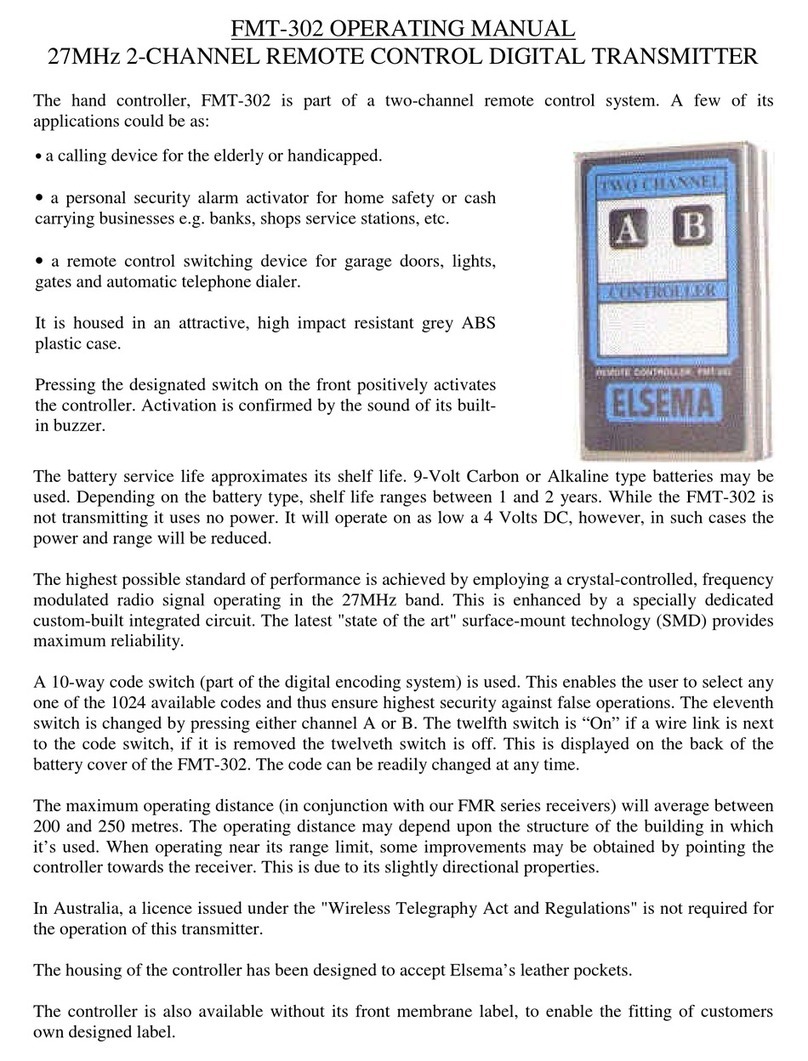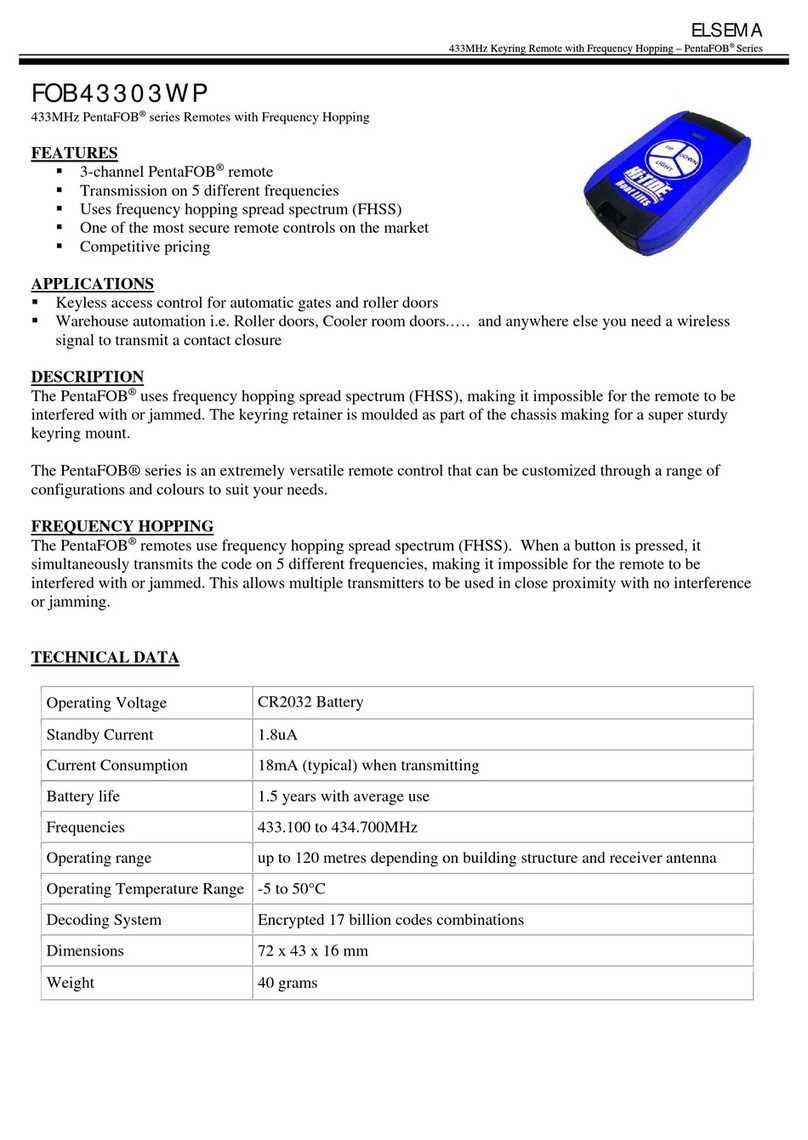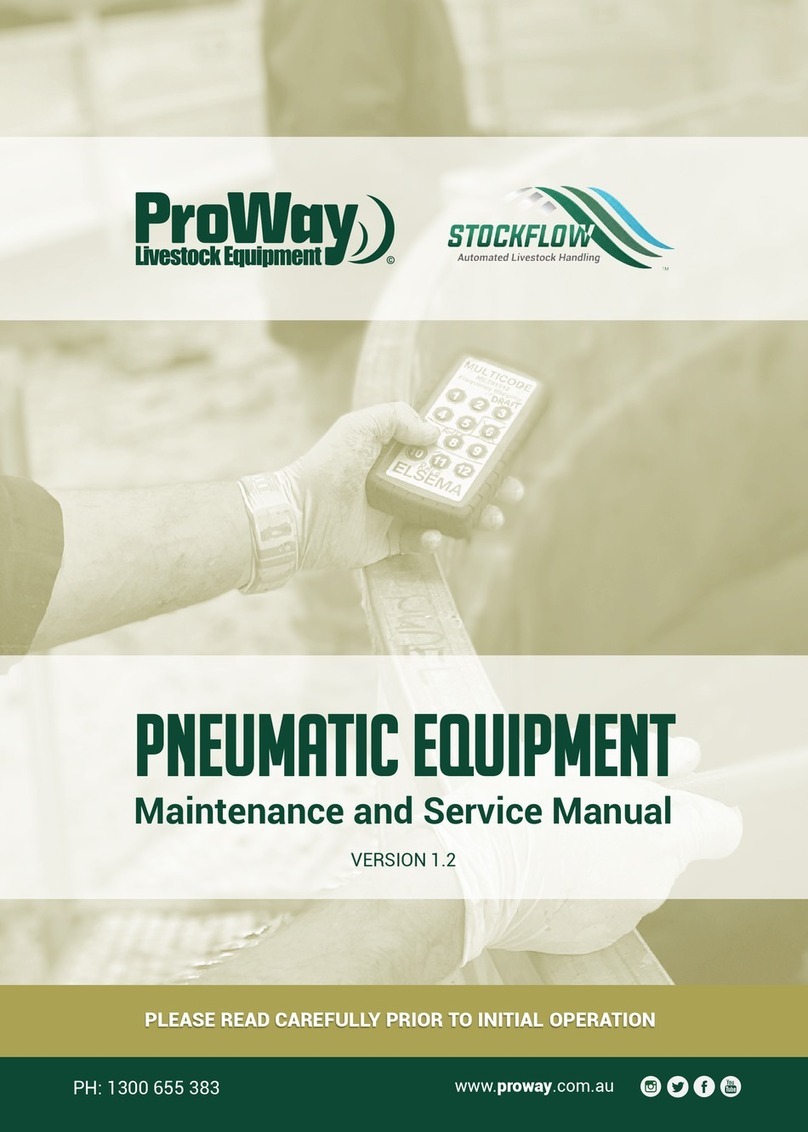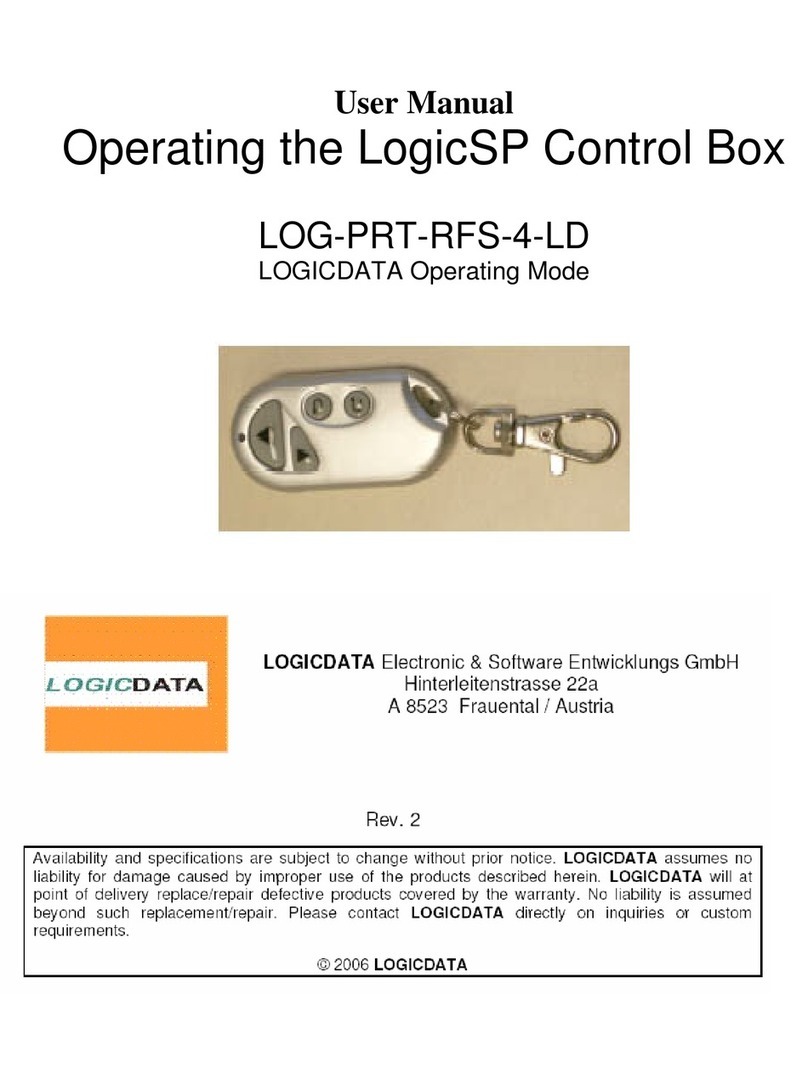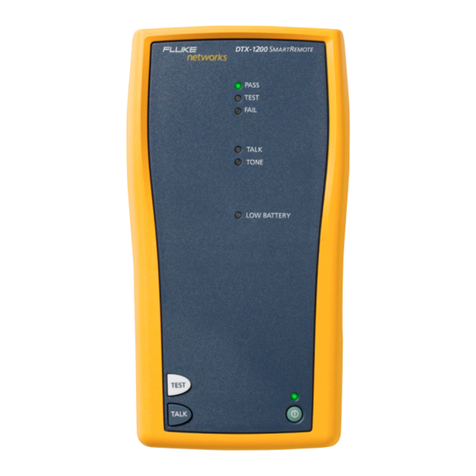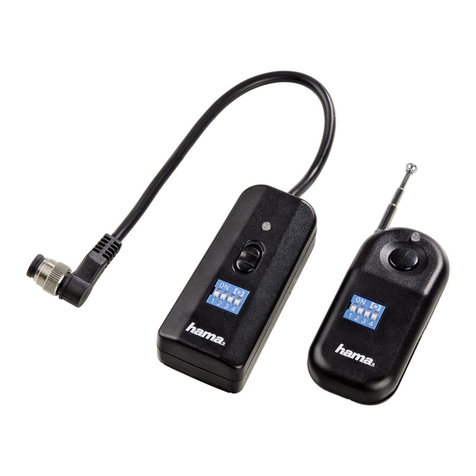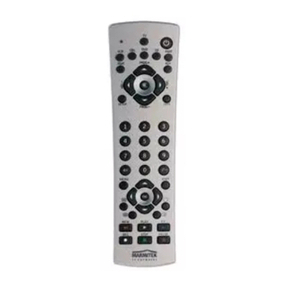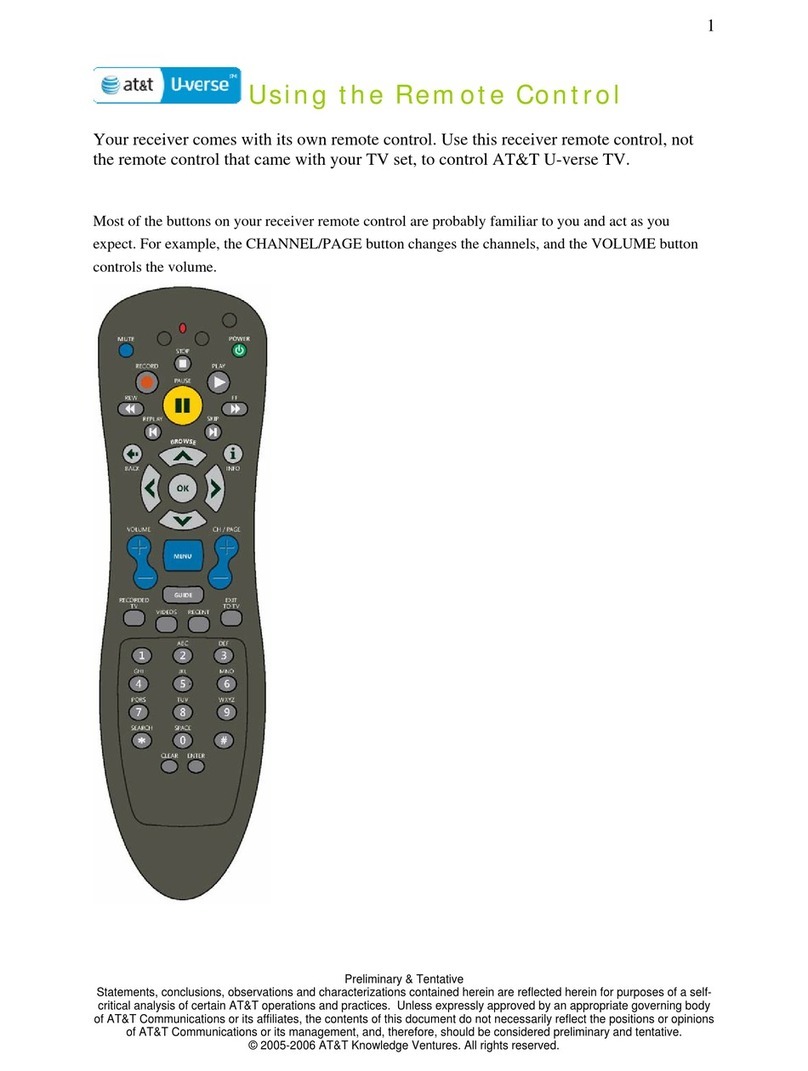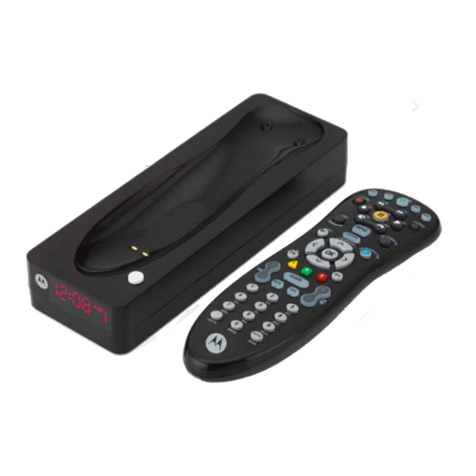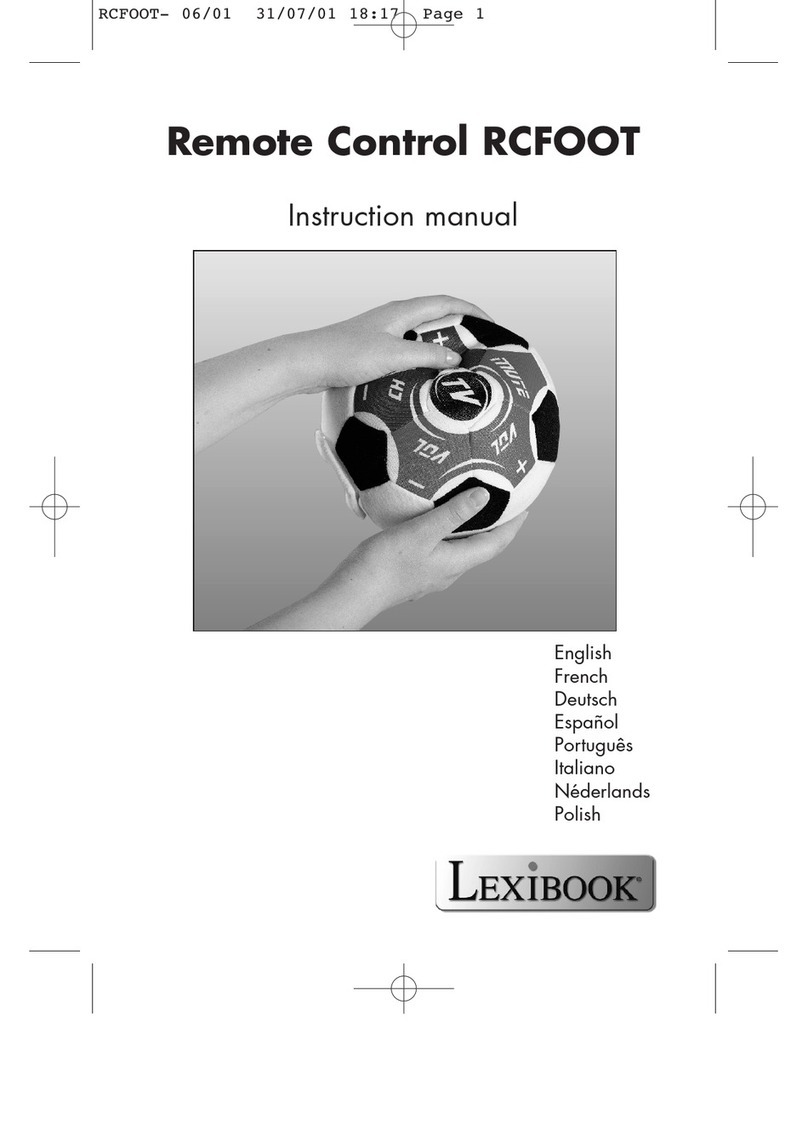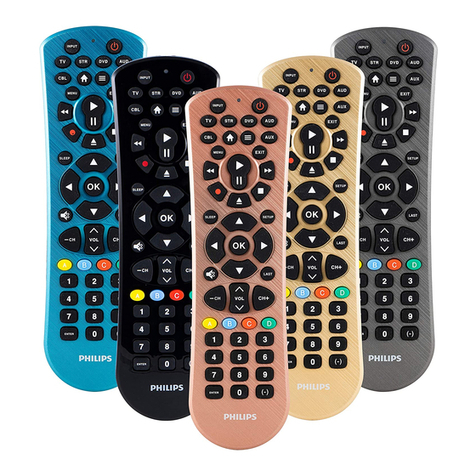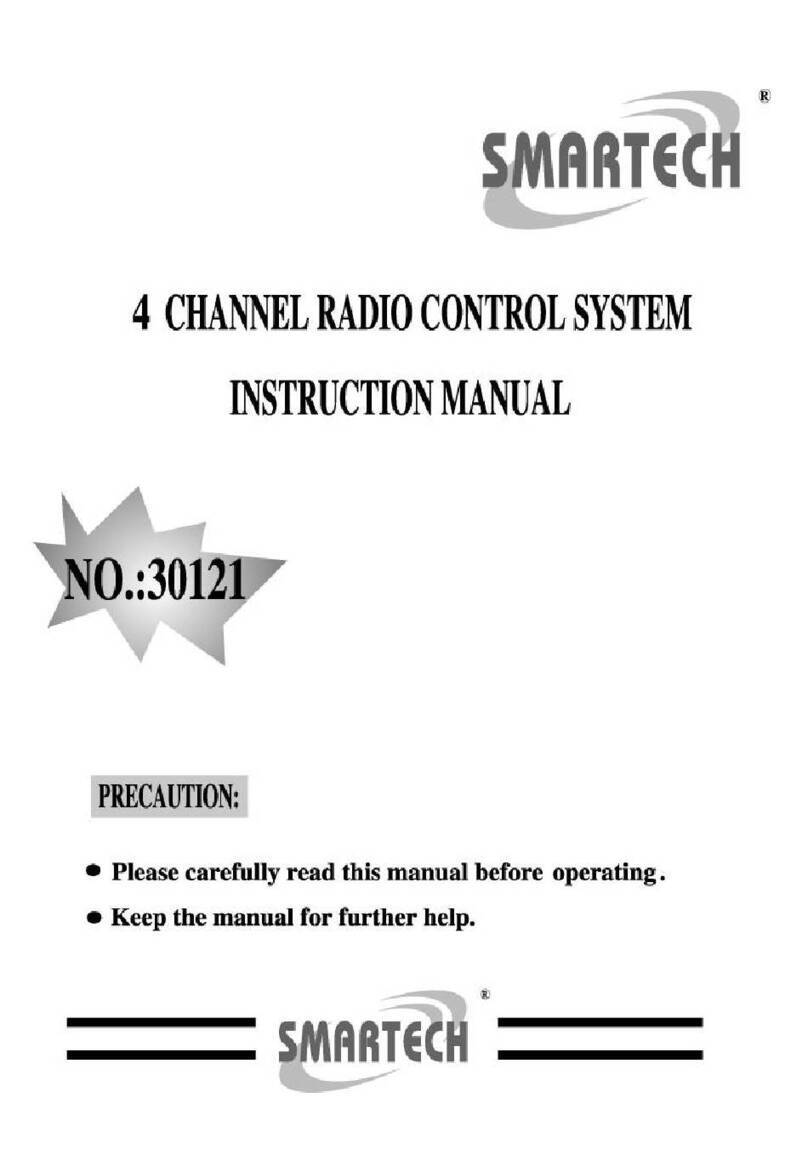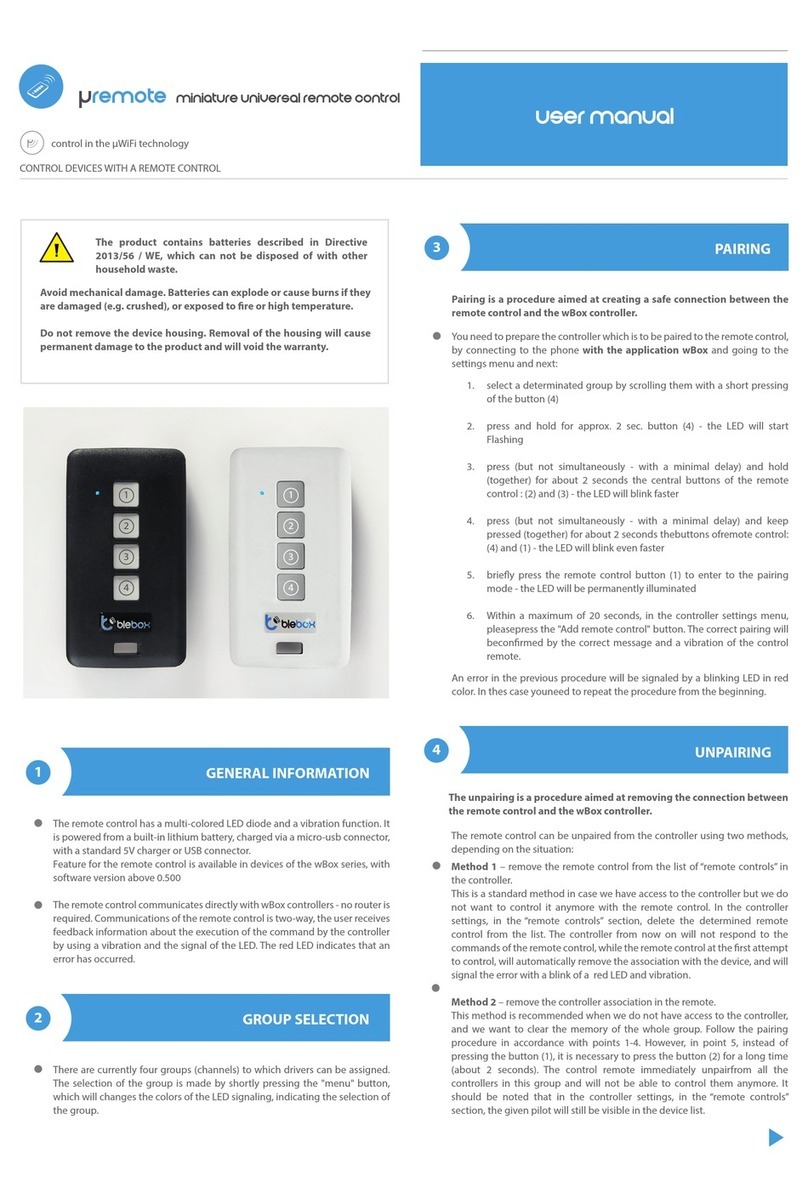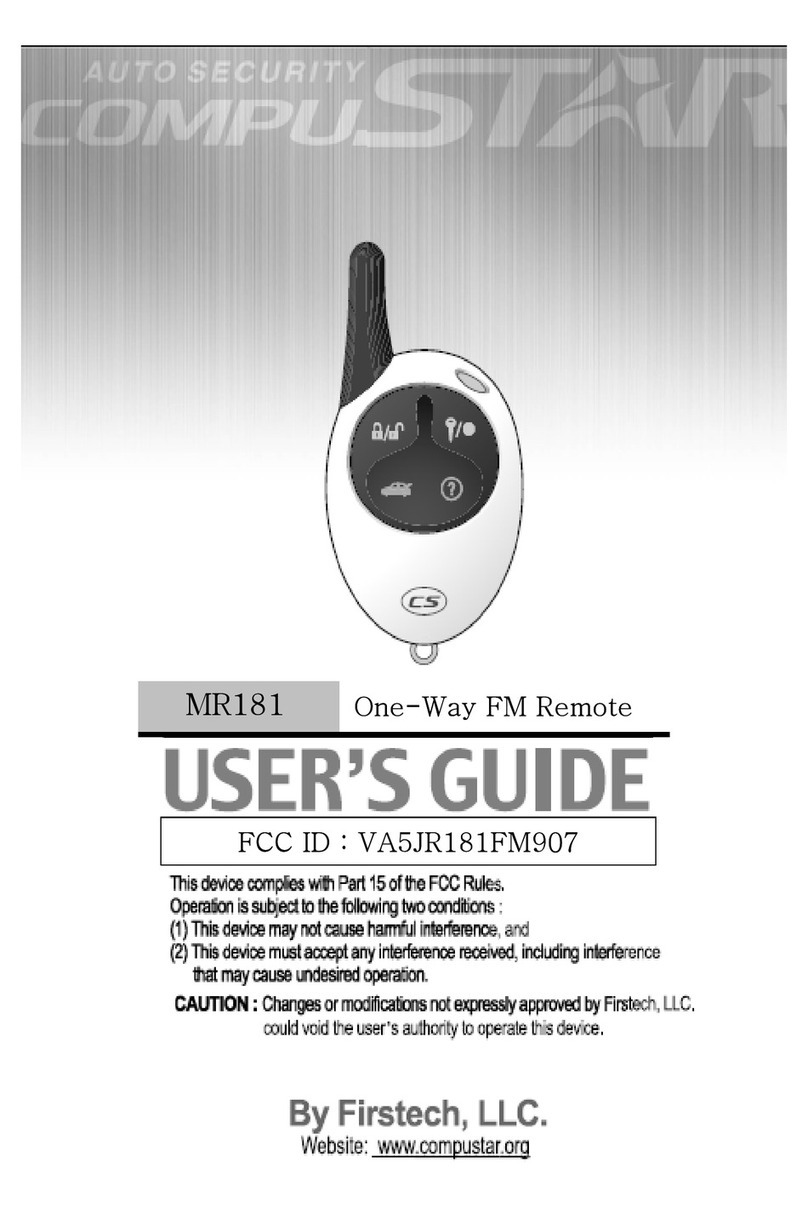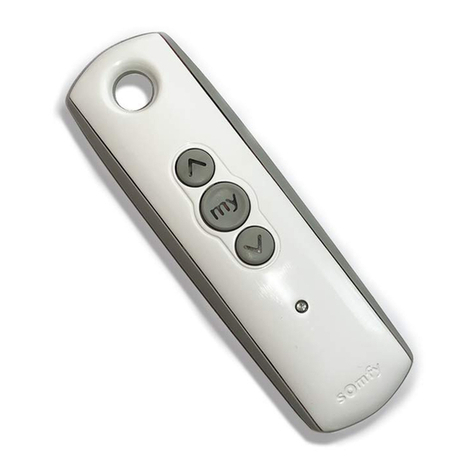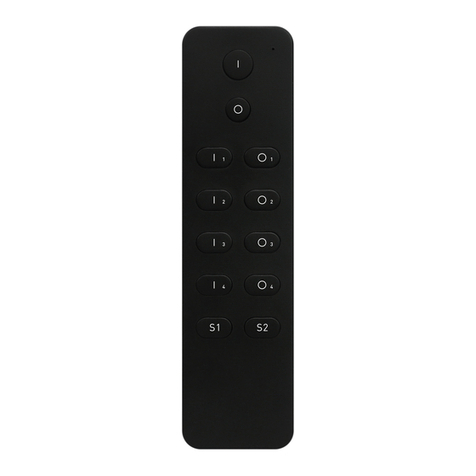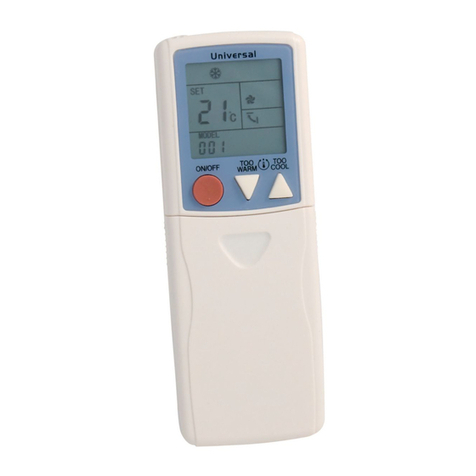Elsema PCK43302 User manual

ELSEMA
433MHz Keyring Remote with Frequency Hopping – PCK Series
PCK43302, PCK43304
433MHz Penta series Keyring Remotes with Frequency Hopping
FEATURES
Small Size keyring remote with 2 or 4 buttons
Dual Coding System, dip switch and encrypted code
Transmission on 5 different frequencies
Uses frequency hopping spread spectrum (FHSS)
One of the most secure remote controls on the market
FCC and AS/NZS 4268 pre-certified
APPLICATIONS
Keyless access control for automatic gates and doors
Home automation i.e. garden lights, swimming pool control etc.
Wire security, lighting and automotive controls
…. and anywhere else you need a wireless signal to transmit a contact closure
DESCRIPTION
The PentaCode
®
dual coding system gives the installer the option to use the classic 12-way dip switch coding or
one of over 17 billion encrypted codes.
With the 12-way dip switch, just match the keyring remotes and the receiver's dip switch and it's coded. No
need for programmers, memory chips or computer databases to store the code.
With the encrypted code you switch all the 12- way dip switches OFF and the remote and receiver automatically
goes into the encrypted coding.
OEM CONFIGURATION
Elsema can customise keypad text and back labels to suit customer needs. Contact Elsema for more details.
TECHNICAL DATA
Operating Voltage 12 Volt Battery
Standby Current 1.8uA
Current Consumption 18mA (typical) at 12 Volts DC supply during transmission
Battery life 1.5 years with average use
Frequencies 433.100 to 434.700MHz
Operating range up to 80 metres depending on building structure and receiver antenna
Operating Temperature Range
-5 to 50°C
Decoding System Encrypted 17 billion codes combinations or On board 12-way code switch
Weight 30 grams

ELSEMA
433MHz Keyring Remote with Frequency Hopping – PCK Series
ORDERING INFORMATION
Part Number Description
PCK43302 2-button, Keyring Transmitter
PCK43304 4-button, Keyring Transmitter
COMPATIBLE RECEIVERS
Below is a list of compatible receivers for the PentaCode keyring remotes.
PCR43301RE
1-Channel Receiver
with Relay Output.
Enclosed in a case
PCR43302P
2-Channel Plug in type
Receiver with Open
Collector Output
PCR43302R
2-Channel Receiver with
Relay Outputs
PCR43302RE
2-Channel Receiver with
Relay Outputs. Enclosed
in a case
PCR43304RE
4-Channel Receiver
enclosed in an IP66 case
PCR43304R
5-Channel Receiver
with Relay Outputs
PCR43305RE
5-Channel Receiver
enclosed in an IP66 case
ELSEMA’s INVENTION
Elsema has once again revolutionised the wireless, automatic gate and door industry. With our next generation
of Penta series that use dual coding, frequency hopping and customisable features, these remotes and receivers
are superior to normal garage door rolling code remotes.
Penta originated from the 5 sides of a Pentagon. The 5 sides representing each frequency the keyring remote
control operates on. Most keyring remote controls operate on a single frequency, we wanted to be the first in the
world to operate a keyring remote control on 5 different frequencies giving it a high level of security and
immunity to interference.

ELSEMA
433MHz Keyring Remote with Frequency Hopping – PCK Series
KEYRING DIMENSIONS
THEORY OF OPERATION
The microcontroller upon detecting an active tact switch input, reads the setting of the 12-way dipswitch. The
active input and the dipswitch data is then sent to the RF IC. The RF IC sends the frequency modulated (FM)
carrier to the PCB antenna via the LC filter and antenna matching.
BLOCK DIAGRAM

ELSEMA
433MHz Keyring Remote with Frequency Hopping – PCK Series
FREQUENCY HOPPING
The PCK series keyring remotes use frequency hopping spread spectrum (FHSS). When a button is pressed,
Dual Coding System simultaneously transmits the code on 5 different frequencies, making it impossible for the
remote to be interfered with or jammed. This allows multiple transmitters to be used in close proximity with no
interference or jamming.
This technology is usually used in very expensive equipment and military applications
BATTERY REPLACEMENT
The PCK series remotes use a 12 Volts DC battery (A23). The battery life is expected to be 1.5 years with
average use. In order to replace the battery, press and slide the battery cover located at the back on the remote.
This exposes the battery. Replace it with the same type of battery while observing the polarity. There may be a
risk of explosion if wrong type of battery is used.
Labeling/ Instruction Requirement
The PCK43302 and the PCK43304 keyring transmitters have been labeled in accordance with FCC and
Australian regulations in effective to the day of this document. No further labeling is required, but it is
necessary to include the FCC compliance statement in the end users product statement.

ELSEMA
433MHz Keyring Remote with Frequency Hopping – PCK Series
REGULATORY COMPLIANCE STATEMENTS
American Users
This device complies with Part 15 of the FCC Rules. Operation is subject to the following two conditions:
(1) This device may not cause harmful interference and
(2) This device must accept any interference received, including interference that may cause undesired
operation.
FCC Notice
This device has been tested and found to comply with the limits for a Class B digital device, pursuant to Part 15
of the FCC Rules. These limits are designed to provide reasonable protection against harmful interference in a
residential installation. This device generates, uses, and can radiate radio frequency energy and, if installed and
used in accordance with the instruction, may cause harmful interference to radio communications. However,
there is no guarantee that interference will not occur in a particular installation. If this device does cause
harmful interference to radio or television reception, the user is encouraged to try to correct the interference by
one or more of the following measures:
•Reorient or relocate the receiving antenna.
•Increase the separation between the equipment and receiver.
•Connect the equipment into an outlet on a circuit different from that to which the receiver is connected.
•Consult the dealer or an experienced radio/TV technician for help.
Caution: Any changes or modifications not expressly approved by the grantee of this device could void the
user’s authority to operate the equipment.
Australian and New Zealand Users
This device has been tested and found to comply with the limits for a Class [B] digital device, pursuant to the
Australian/New Zealand standard AS 4268.2 (2008) set out by the Spectrum Management Agency.
This manual suits for next models
1
Table of contents
Other Elsema Remote Control manuals
